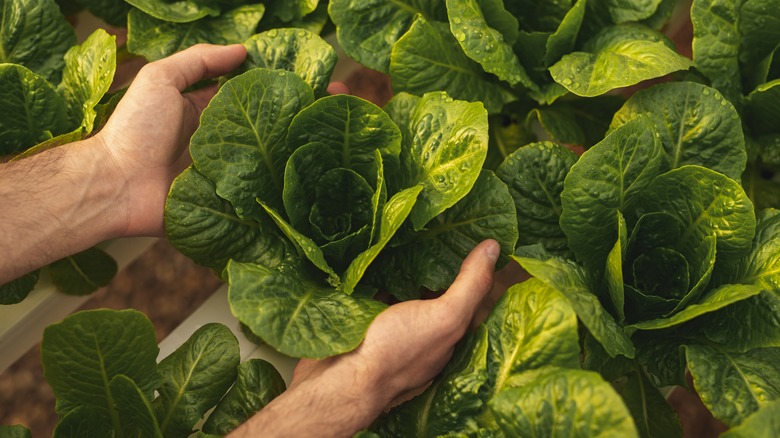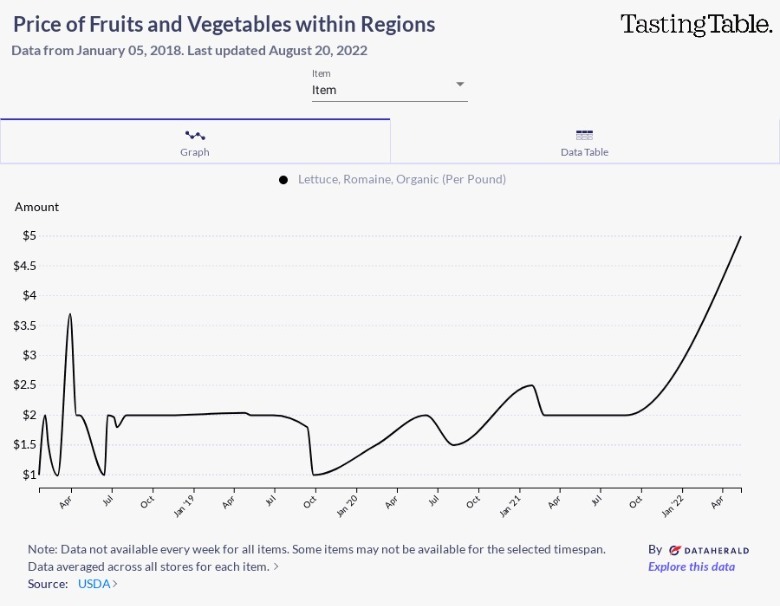The Price Of Organic Romaine Lettuce Has Skyrocketed
There's no denying it: food prices are rising. Forbes points to several factors depressing the dollar's buying power when it comes to food and groceries. Among them are pandemic-related problems, from supply-chain disruptions to increased employee turnover, the Russian invasion of Ukraine, and the elevated price of fuel. Further, CNBC notes that farmers are dealing with a spike in the cost of crucial fertilizers, with one farmer noting that the price per ton of fertilizer had risen from $270 to $1,400 year-over-year.
Organic foods typically outpace their conventional counterparts in price, explains the Food and Agriculture Organization of the United Nations. This has to do with the limited supply, the economy of scale, increased production costs, and inefficiencies in marketing and supply chain management.
Much like other foodstuffs, organic produce has risen in price with inflation, reports Supermarket News. In the second quarter of 2022, the general cost per pound of organic produce was up 6.7% compared to Q2 of 2021, averaging $3.22. One indicative item is organic Romaine lettuce, which has seen a steep increase in price in the past year.
A significant jump
Tasting Table data tracking organic Romaine lettuce prices show that they have jumped well over 100% between April 2021 and April 2022. The average price per pound went from $2 to $5 in that period. While the 2021 average price was significantly below an April 2018 spike that saw prices climb above $3.50 per pound, the recent uptick represents the most significant change in the last four years.
Again, the reason behind this increase is manifold, hitting on many of the broader issues facing farms in the U.S. As the Gardening Channel notes, lettuces, in general, are fertilizer-intensive plants that need rich soil to produce economically viable quantities. That means rising fertilizer costs have an acute impact on prices.
Beyond this, Truckload Shipping notes that California is one of the highest-producing states for Romaine. As indicated by the Public Policy Institute of California, the drought there is both increasing demand for water due to soaring temperatures and decreasing its availability.
Of note, though, is the gap in price between organic and conventional produce. Axios notes that the price of conventional produce is moving upward faster than that of their organic cousins. They speculate that this could be due to the resilience of the organic-specific supply chain and the growing ubiquity of organic produce in more mainstream stores.

